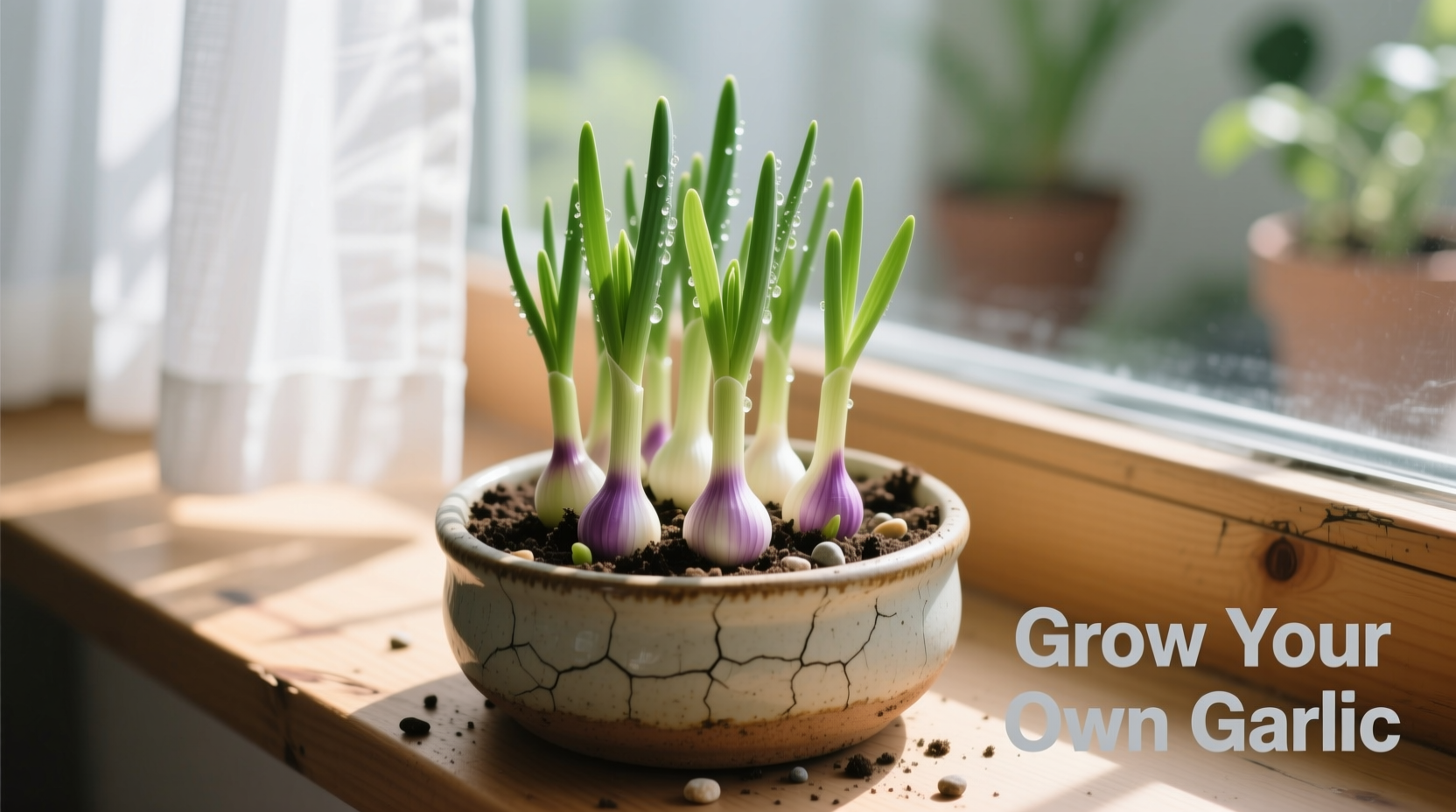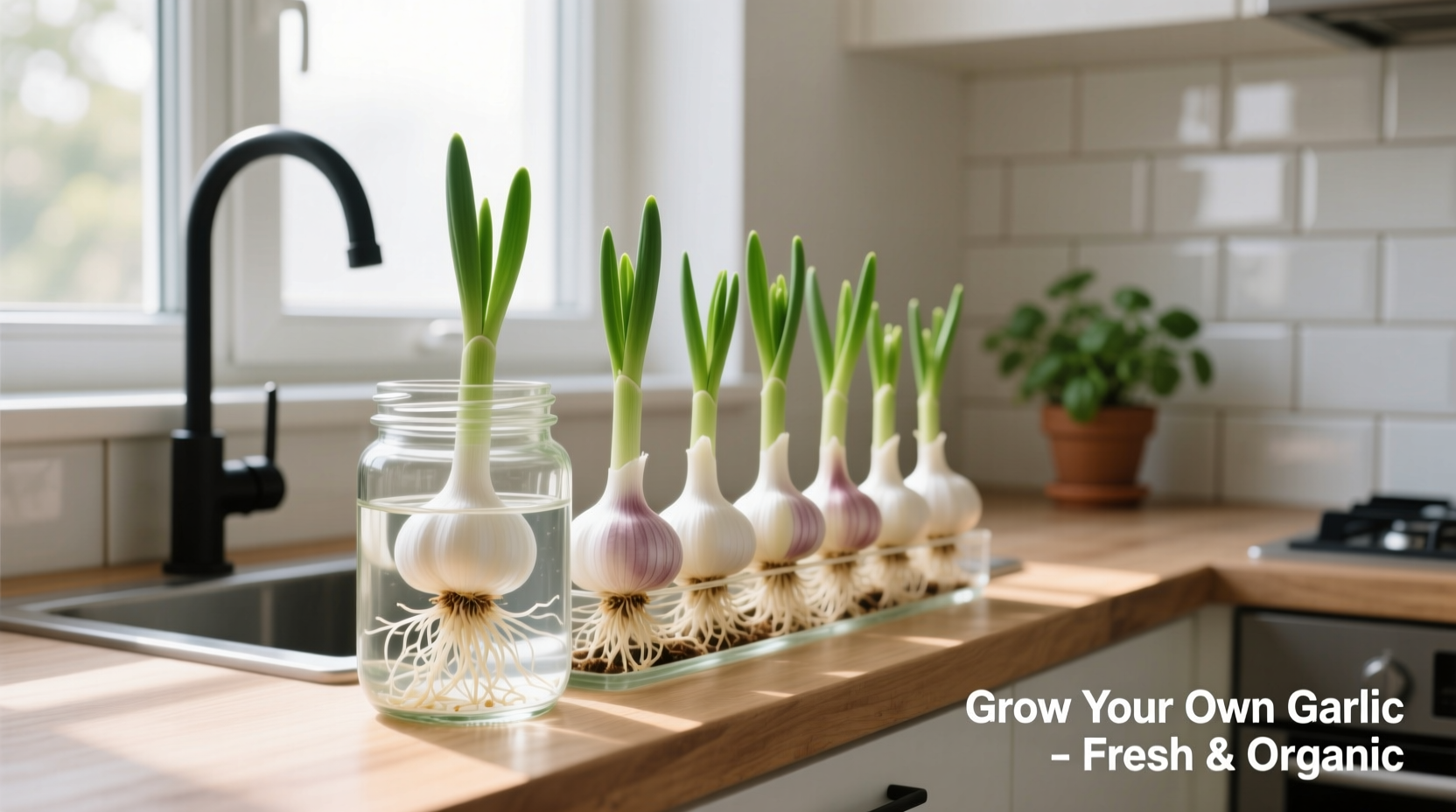Imagine harvesting fresh garlic from your kitchen windowsill year-round, regardless of outdoor space or climate. Growing garlic inside transforms a simple kitchen staple into a continuous source of flavor while saving you money on grocery store bulbs that often sprout in your pantry anyway. Whether you're in a city apartment or simply want fresh garlic during winter months, indoor cultivation delivers results with minimal equipment.
Planning Your Indoor Garlic Garden
Successful indoor garlic starts with selecting the right variety. Not all garlic types thrive in containers, so understanding your options is crucial before planting.
| Garlic Variety | Indoor Suitability | Time to Harvest | Flavor Profile |
|---|---|---|---|
| Solo (Pearl) Garlic | Excellent | 6-8 months | Mild, slightly sweet |
| Silver White | Good | 8-10 months | Medium heat, classic garlic |
| Elephant Garlic | Fair | 9-12 months | Mild, leek-like |
| Hardneck Varieties | Poor | N/A | Strong, complex |
According to research from the University of California Agriculture and Natural Resources, softneck varieties like Solo and Silver White perform best indoors because they don't require vernalization (cold period) to form bulbs. Hardneck varieties typically need extended cold exposure that's difficult to replicate consistently indoors.
Setting Up Your Indoor Garlic System
Container selection determines your garlic's root development and ultimate bulb size. Unlike outdoor growing where soil expands infinitely, indoor containers create specific growing boundaries that require careful planning.
For full bulb production, use containers that are at least 8 inches deep with drainage holes. The container width matters less than depth since garlic roots grow downward. Plastic pots work well for moisture retention, while terracotta provides better aeration but dries out faster. Avoid containers narrower than 6 inches across as they restrict bulb development.
Soil composition is equally critical. Combine:
- 60% high-quality potting mix
- 30% perlite for drainage
- 10% compost for nutrients
Do not use garden soil, which compacts in containers and may contain pathogens. The USDA National Institute of Food and Agriculture confirms that proper soil structure prevents root rot while supporting healthy bulb formation.

Planting Process: Step by Step
Follow these precise steps for optimal germination and growth:
- Choose healthy cloves: Select the largest, firmest cloves from organic bulbs (conventional bulbs may be treated with growth inhibitors)
- Planting depth: Place cloves pointy-end up, 2 inches deep in soil
- Spacing: Allow 4 inches between cloves in larger containers
- Initial watering: Moisten soil thoroughly but avoid saturation
- First growth phase: Keep in indirect light for first 2 weeks
The Royal Horticultural Society notes that planting depth directly impacts bulb size—too shallow results in small bulbs, while too deep delays emergence. Maintain consistent moisture during the first month when root development determines future bulb potential.
Lighting Requirements for Indoor Garlic
Natural light alone rarely suffices for full bulb development indoors. Here's what research from Michigan State University Extension reveals about lighting needs:
- Minimum requirement: 6 hours of direct sunlight daily (south-facing window)
- Optimal condition: 12-16 hours with supplemental lighting
- Best artificial light: Full-spectrum LED at 3000-5000K color temperature
- Light distance: 6-12 inches above plants
For garlic greens (harvested in 7-10 days), natural light may suffice. But for full bulb development, supplemental lighting dramatically improves results. Position lights on a timer to ensure consistent daily exposure—garlic requires photoperiod sensitivity to initiate bulb formation.
Maintenance Schedule for Healthy Growth
Indoor garlic needs consistent care following this seasonal maintenance timeline:
- Weeks 1-4: Keep soil consistently moist (not wet); no fertilizer needed
- Months 2-4: Water when top inch of soil dries; begin balanced liquid fertilizer monthly
- Months 5-7: Increase watering frequency as bulbs develop; fertilize every 3 weeks
- Month 8: Reduce watering to signal bulb maturation
Temperature plays a crucial role—maintain 60-70°F (15-21°C) during growth phase. The Agricultural Research Service confirms that temperatures above 75°F (24°C) can cause premature bolting or smaller bulbs. Avoid placing containers near heating vents or drafty windows.
Troubleshooting Common Indoor Growing Problems
Even with proper care, indoor garlic may encounter these issues:
- Yellowing leaves: Usually indicates overwatering—allow soil to dry slightly between waterings
- Thin, weak growth: Sign of insufficient light—move to brighter location or add supplemental lighting
- Mold on soil surface: Reduce humidity and improve air circulation
- Stunted bulb development: Often caused by container too small or inadequate light duration
Unlike outdoor growing, indoor garlic rarely faces pest problems. However, watch for spider mites in dry environments—regular misting helps prevent infestations. The University of Florida IFAS Extension recommends neem oil solution (1 tsp per quart of water) for any pest issues.
Harvesting and Storage Techniques
Knowing when to harvest determines your garlic's flavor and storage life. For full bulbs, watch for these maturity signs:
- Lower leaves turn brown while upper leaves remain green
- Soil around container appears pushed up by expanding bulbs
- Approximately 8-10 months after planting (depending on variety)
Carefully loosen soil and lift bulbs without damaging them. After harvesting, cure garlic in a warm, dry, well-ventilated area for 2-3 weeks. The National Center for Home Food Preservation specifies that proper curing—where outer skins become papery—extends storage life significantly.
Store cured bulbs in mesh bags or open baskets in a cool, dark place (55-65°F / 13-18°C). Properly stored indoor-grown garlic lasts 4-6 months. For immediate use, refrigerate in a paper bag for up to 2 weeks.
Frequently Asked Questions
Can I grow garlic indoors year-round?
Yes, you can grow garlic indoors continuously by staggering plantings every 4-6 weeks. Start new cloves while others are maturing to maintain a constant supply of garlic greens, with full bulbs available seasonally.
How much light does indoor garlic need for bulb formation?
For full bulb development, garlic requires 12-16 hours of light daily. While 6 hours of direct sunlight from a south-facing window works for garlic greens, supplemental LED lighting is necessary for proper bulb formation indoors.
Why are my indoor garlic bulbs so small?
Small bulbs typically result from insufficient light duration, containers that are too shallow, or planting cloves too close together. Ensure at least 8 inches of depth, 4 inches between cloves, and 12+ hours of daily light for optimal bulb size.
Can I regrow garlic from store-bought cloves?
Organic store-bought garlic works well for indoor growing, but conventional bulbs may have growth inhibitors. Look for plump, firm cloves without signs of mold. Avoid grocery store bulbs specifically treated to prevent sprouting.











 浙公网安备
33010002000092号
浙公网安备
33010002000092号 浙B2-20120091-4
浙B2-20120091-4